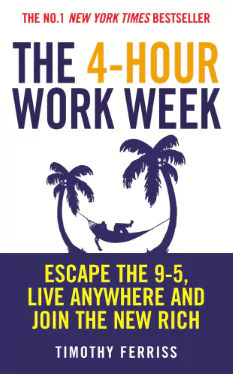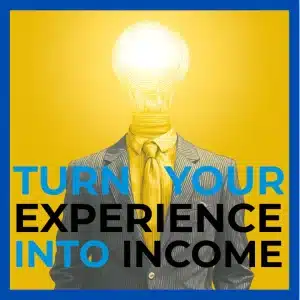
Feeling Overwhelmed? What does that mean?
Are you stressed out and overwhelmed right now? I used to suffer a lot from overwhelm. I’d be in a situation and all of a sudden it would all get too much and I’d have a meltdown and let off some steam.
What does overwhelm mean? And is there science about how we get stressed out? My simple definition of overwhelm is:
When I have more than I can handle right now.
Overwhelm is a sign that we are not coping. It might be too many tasks, too little time to complete them or just a general emotional overwhelm of too much going on and not having the energy or willpower to deal with it.
An important point here is that feelings of overwhelm will vary from day-to-day. For instance, when I’m tired I can handle much less – and the science on sleep supports this. Being chronically tired can be the equivalent of being drunk.
On other days when I’m well rested and calm, it seems like I can handle almost anything.
The Science of Being Stressed and Overwhelmed
A lot of what we talk about when we refer to ‘stress’ is about negative stress.
This is a narrow view of life because even if you’re sitting still and not doing a whole lot, your body is working hard to regulate itself. It needs to manage our breathing, our heart rate, our digestion, our blood flow, etc. There are lots to be done!
When we engage with life, our naturally bodies react. If we’re walking upstairs, our bodies require extra oxygen and more blood pumped to our muscles. This automatically puts stress on the body in a light and easy way – unless of course you weigh 300 pounds and you’re carrying four heavy groceries bags up ten flights of stairs, then the stress on your body is much higher.
The good news about stressing our bodies is that when we stimulate our bodies and brains we grow. That’s why athletes train and why students learn.
Here’s a clever infographic on The Science of Stress and Stress Relief
Why Rest and Recovery is Crucial
The not so good news is when we stress and overwhelm ourselves too often it becomes chronic – meaning we don’t recover.
You might like to think of this as having a lot of rain over many days. In the beginning, we like the rain because it freshens up our gardens. But when we have too much rain the water cannot soak into the ground anymore leading to flooding and washing our garden away. Not so good.
This leads us to an important idea in training for athletes: the training effect for athletes does not occur when they’re working out. It occurs in the recovery stage. In fact, it’s the ability to recover quickly from effort that is a core measure of your fitness levels.
For instance, when lifting heavy weights you’re putting strain on your muscles and likely to be causing tiny tears in the muscle fibres. This stresses out your body. But, in response to this your brain says, ‘We’d better prepare better for that in case it happens again, so let’s add some more muscle there.’ In this way our muscles grow and we are better able to respond next time.
The important thing to note is that this happens between our workouts. During the workout we are deliberately putting our body under stress. When we stop and recover is when our body can work to repair and improve itself.

The Neuroscience of Getting More Done
The same applies to our mental work. It might surprise you to realize that you can get more done when you take a break. Here’s why…
You might have heard that we have two sides to the brain. This is now a little out of date – the live images of our brains at work show its not a very accurate way of describing how our brains really operate.
Instead, Ori Brafman in The Chaos Imperative suggests we consider the uptime and downtime brain.
These two different parts of our brain are engaged by different tasks that we perform.
The uptime brain engages when we’re doing task-focused work – high concentration on specific details.
The downtime brain engages when we let our brains wander. Here, our minds start connecting the dots between what’s been happening and possible paths for going forward. That’s why ideas and solutions pop when we’re in the shower or walking the dog.
If we spend too much time using the uptime brain we can become overwhelmed and worn out.
Instead, we perform better when we regularly switch between the two modes.
This means if you want to get more done – particularly if you’re in a hurry, facing a tight deadline or stressed to the eyeballs – literally, have some downtime. That means – take a break!
Four Types of Short Breaks
There are four types of short breaks you can take.
1 Micro Break
Every 30 minutes stand up from your desk and move for at least 60 seconds. This is important for your physical health – you might have heard that ‘sitting is the new smoking’. Get up, wave your arms about and move regularly.
2 Mini Break
Every hour change your activity for at least 5 minutes. This is one of the reasons that I like the Pomodoro Technique so much – it has a break built into its design.
3 Made Break
Schedule breaks into your daily and weekly schedule. Make them happen!
This includes taking a lunch break away from your desk. And it also includes changing your activity during your day. This can be as easy as going for a walk when you make your phone calls instead of sitting at your desk.
And whenever you feel start to overwhelmed take a nature break and stroll amongst the trees and maybe some water.
4 Major Break

Normally, when we think about a major break we think about a few days here or there. Or perhaps a week or two – our major annual break. Normally, when we think about a major break we think about a few days here or there. Or perhaps a week or two – our major annual break.
While this is good, Tim Ferris in his best-selling book The Four Hour Work Week, says we should “stop taking vacations!” and take it one step further. Instead of taking those one or two days, and those odd weeks where you cram all that travel and all that site-seeing into a stress filled holiday. Start taking mini-retirements for 3-6 months every year!
Consider, how much it would cost to live in Thailand or South America for three months. It’s a lot cheaper than staying at home with your nose to the grindstone. Most of what we earn goes in taxes and in keeping our current lifestyle afloat… the car, the house, the…
Instead you could be ‘working’ in the sun on your high-tech yacht, learning a foreign language, volunteering on a fresh water project in China or sipping local lager in Laos. Go on, you know you want to…
Taking longer breaks such as a mini-retirement might be just what you need to rest, recover and recharge your tired career or business.
(I rapped The Four Hour Work Week over at Book Rapper as The Four Hour Jolt)
Summary: On Overcoming being Overwhelmed
The easy solution to being overworked, overwhelmed and stressed out at work is to include more breaks and changes in activity during your day and week. There is an old Buddhist saying ‘If you don’t have time to meditate for half an hour, then do a full hour.’ Take a break to get more done – your body and brain will thank you for it later.



